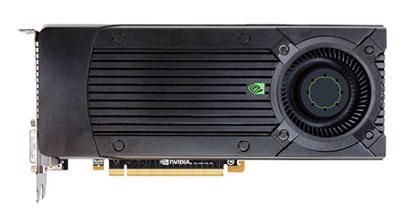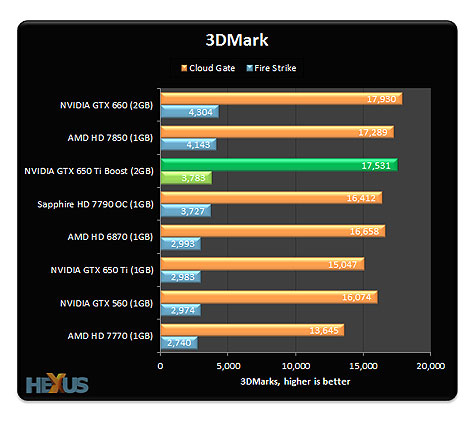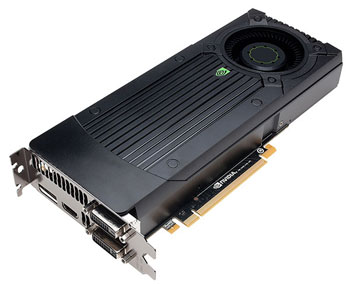Our Aim
To provide you with an overview on New And existing technologies, hopefully helping you understand the changes in the technology. Together with the overviews we hope to bring topical issues to light from a series of independent reviewers saving you the time And hassle of fact finding over the web.
We will over time provide you with quality content which you can browse and subscribe to at your leisure.
TekSpek 's
NVIDIA GeForce GTX 650 Ti Boost
Date issued:
Cutting-edge gaming at an affordable price
The recent introduction of mainstream graphics processors has brought PC gaming into sharper focus. £100-£150 cutting-edge GPUs provide reasonable 1080p performance in today's latest games, while in-game visual quality is, quite rightly, far superior than that achievable on the years-old PlayStation 3 and Xbox 360 consoles. It's not a reach to say that the lull between console generations provides the PC ecosystem with an exciting window of opportunity, where small, quiet gaming PCs can provide class-leading visuals.

Creating a sub £150 card
Nvidia uses the same underlying piece of silicon - 2.54bn-transistor GK106 core - for both the incumbent GTX 660 and GTX 650 Ti, while GTX 660 Ti uses the larger GK104 die. Common sense dictates that GTX 650 Ti Boost also uses the GK106 silicon in a form that bridges the performance gap between presently available GTX 660 and GTX 650 Ti. In customary fashion, the simplest way to explain it is by rolling out the specification table.
| GeForce |
GTX 660 (2,048MB) |
GTX 650 Ti Boost (2,048MB) |
GTX 650 Ti (1,024MB) |
|---|---|---|---|
| Die Codename | Kepler GK106 |
Kepler GK106 |
Kepler GK106 |
| DX API | 11.1 |
11.1 |
11.1 |
| Process | 28nm |
28nm |
28nm |
| Transistors | 2.54bn |
2.54bn |
2.54bn |
| Die Size | 221mm² |
221mm² |
221mm² |
| SMX Units | 5 |
4 |
4 |
| Processors | 960 |
768 |
768 |
| Texture Units | 80 |
64 |
64 |
| ROP Units | 24 |
24 |
16 |
| GPU Clock (MHz) | 980 (1,033) |
980 (1,033) |
925 |
| Shader Clock (MHz) | 980 (1,033) |
980 (1,033) |
925 |
| GFLOPS | 1,882 |
1,505 |
1,421 |
| Memory Clock (MHz) | 6,008 |
6,008 |
5,400 |
| Memory Bus (bits) | 192 |
192 |
128 |
| Max Bandwidth (GB/s) | 144.2 |
144.2 |
86.4 |
| Power Connectors | 6-pin |
6-pin |
6-pin |
| TDP (watts) | 140 |
140 |
105 |
| GFLOPS per watt | 13.44 |
10.75 |
13.53 |
| SLI | Yes, 2-way |
Yes, 2-way |
No |
| Current MSRP | £165 |
£144 |
£115 |
Underscoring the silicon similarities the first five rows are identical for the trio of mid-range GPUs. GTX 650 Ti Boost uses one fewer SMX unit - down from five to four - than GTX 660 but, as you can see, the same as the GTX 650 Ti (non-Boost). But this is where the clear similarities with the GTX 650 Ti end, because in all other aspects the GTX 650 Ti Boost is far more like the GTX 660 in design.
For example, the new GPU features the same core clock, boost frequency (hence the name), memory speed, framebuffer size, memory-bus width, SLI ability and TDP as the GTX 660. In fact think of it as a deliberately stunted GTX 660, where one of the five SMX units has been switched off in order to create a card for a particular price point.
Another glance at the specifications reveals that, with bags more memory bandwidth on tap, and the 192-bit-wide bus is crucial in this regard, GTX 650 Ti Boost is sure to be significantly faster than the regular GTX 650 Ti in many games that rely on a GPU's back-end muscle for post-processing.

Performance
As shown by benchmarks from leading online publications, a stock-clocked GeForce GTX 650 Ti Boost is over 25 per cent faster than a GeForce GTX 650 Ti, making it stand out as one of the most potent graphics solutions available for under £150.
The card's high-end make-up and capable memory subsystem is such that it excels at delivering smooth performance at full-HD, 1,920x1,080 resolutions with medium levels of image quality and in-game eye candy.
Summary
A proven GK106 architecture leads to the GeForce GTX 650 Ti Boost delivering full-HD gaming performance that is more than satisfactory when running medium/high-quality settings in many of today's latest games. Its 25 per cent-plus improvement over a GTX 650 Ti is genuinely telling as it marks the difference between playable and what we consider smooth frame-rates.

Nvidia's latest is without a doubt one of the strongest sub-£150 graphics cards ever released, and Scan Computers has a wide range of partner cards available to purchase: click here to browse our range.